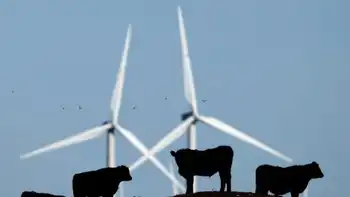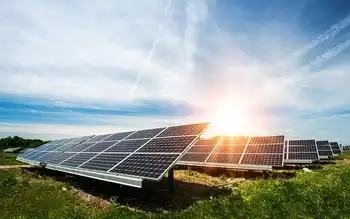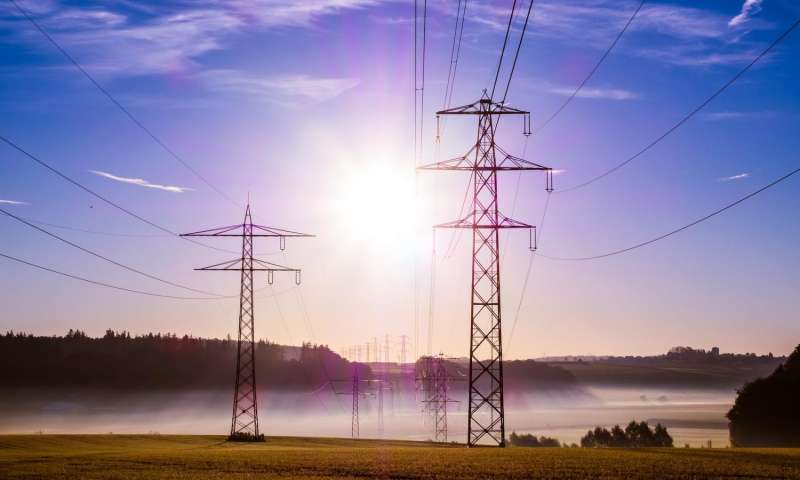Reactor design puts safety into question
By Globe and Mail
NFPA 70b Training - Electrical Maintenance
Our customized live online or in‑person group training can be delivered to your staff at your location.

- Live Online
- 12 hours Instructor-led
- Group Training Available
If reactors are not shut down quickly, their ability to keep radioactivity from escaping would be put to the test, according to an internal commission document.
The document says Canada's seven nuclear stations, which all use Candu technology, have a feature known as “positive reactivity feedback,” in which their atomic chain reactions automatically speed up if the water pumped into the reactors to cool them leaks, one of the worst accidents possible at a nuclear station. If reactors aren't immediately shut down during this type of incident, positive reactivity leads to a quick snowballing in the pace of nuclear reactions, which in turn could cause potentially damaging overheating.
The fear is that with a large loss of coolant, such overheating could put the nuclear facilities' containment features – the concrete domes and other protective mechanisms around reactors that are the last-ditch defences to stop the spread of radioactivity into the environment – to a dangerous test.
The commission is monitoring the problem closely because positive reactivity could lead to “severe core damage and early challenge of containment integrity if not arrested in time” during a severe loss of coolant accident, the document said.
The discovery prompted the regulator, the Canadian Nuclear Safety Commission, to warn that it may have to order nuclear power plants to run at less-than-full power indefinitely to compensate for what it deems less-safe conditions at the stations, according to the document.
The commission and the three utilities that operate reactors – Ontario Power Generation, NB Power, and Hydro-Québec – will likely have to spend “considerable resources” dealing with safety issues related to the problem and still may not be able to resolve it fully, it said.
“In the end, despite the best efforts on all sides, the possibility of further erosion of the available safety margins as well as imposition of additional operational and procedural limits cannot be precluded… for current Candu reactors.”
Although positive reactivity is not well known outside the nuclear industry, problems connected with it prompted Atomic Energy of Canada Ltd. to scrap its two Maple reactors in May, 2008, after spending more than $500-million on them, leading to a crisis in the supply of medical isotopes.
According to the document, commission staff have always known that Candu nuclear power plants have positive reactivity, but they conceded that they miscalculated the magnitude of the condition. For instance, they said they underestimated a number used to measure it by 50 per cent.
The document was obtained by the anti-nuclear environmental group Greenpeace through a federal Access to Information Act request. Positive reactivity is “the Achilles heel of Candu,” said spokesman Shawn-Patrick Stensil, who contended it amounts to a design flaw that puts the safety of the reactors into question.
But Greg Rzentkowski, the commission's director-general of the directorate of power reactor regulation, said the reactors' shutdown systems were designed to counteract positive reactivity, by stopping the chain reactions before they grow large enough to cause overheating, even during a severe loss of coolant accident. He said in an interview that he was “absolutely confident” that the design doesn't pose a risk.
However, he said, worries about declining safety margins are occurring because the plants are aging, which makes them more susceptible to positive reactivity. Regulators want high safety margins to cope with unexpected problems, such as equipment malfunctions and errors by plant operators.
One problem identified by Mr. Rzentkowski is that the pressure tubes carrying coolant through a reactor sag when they have been in use for a long time, wear and tear that would enhance the reactivity problem during an accident.
Mr. Rzentkowski said the commission would consider ordering the stations to run at less than full power if safety margins shrink to unacceptable levels, with the Pickering and Darlington reactors in Ontario the first to be considered for such output cuts.
Greenpeace asked for records about positive reactivity compiled at the commission from September 1 last year to March 31. But Mr. Rzentkowski said he thought the undated document, which was marked as a draft, was likely written in 2007 and was used in discussions with nuclear utility representatives.
The positive reactivity problem is highly technical, and has arisen because of the unique design of Canada's reactors. According to the document, the main factors “that introduce this hazard” are the Candu's use of natural uranium as fuel and the internal structure of the reactors, in which the heavy water used to cool them is separated from the water that moderates the pace of atomic chain reactions to safe levels.
To prevent this process from getting out of hand, stations are laced with sensors that measure such crucial variables as water flows, temperatures and pressures. These sensors automatically trigger emergency shutdown systems at the first whiff of anything unusual. Reactors are supposed to shut down rapidly – within 1.2 to 1.5 seconds – to catch the overheating before temperatures surge enough to melt the inside of the reactor, Mr. Rzentkowski said.
Most electricity-generating reactors in the world – about 80 per cent – have negative reactivity, so that the amount of energy they produce would peter out rather than increase when coolant is lost.
Mr. Stensil of Greenpeace said that the decision of the overwhelming majority of the world's nuclear power plant operators to select alternative technology that doesn't have the feature is a sign that allowing it in Canadian reactors was a major mistake.











